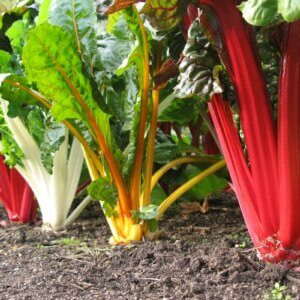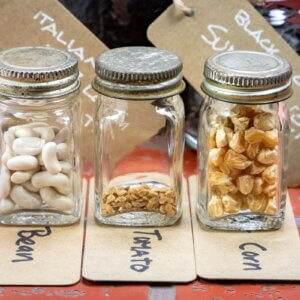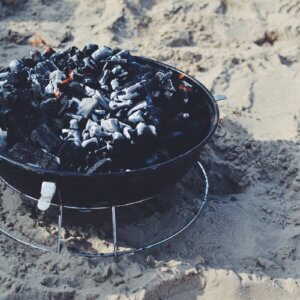Many gardeners and homesteaders can testify to taking a stroll through their garden and finding slimy little guys slithering on their flowers and vegetables. A common thought that arises would be “Are these snails good for my plants?” or “Should I get rid of them?” Look no further for the answers. This article will cover them.
Slugs and snails can both be good for gardens, but snails are generally more beneficial than slugs. There can be major benefits to having them around — however, the saying “Too much of a good thing …” rings true here. Just as you don’t want to overwater your garden, you don’t want too many slimy friends there.
If a snail population goes out of control, it can lead to snail problems, which in turn make the downside apparent: You’re going to have a slimy problem on your hands. We’ll cover how to moderate snail populations in this article, but before we start talking about that, let’s first answer the question “What are they good for?”
Benefits of Snails and Slugs
Snails and slugs are both opportunistic feeders, meaning they feed on whatever is around. Slugs tend to target all parts of a plant from the roots, stems, and leaves, to the fruit. If their numbers become too high, they can easily cause significant damage and take down a garden bed. They do, however, eat invertebrates, and if you’re having pest problems, they can be super helpful in eliminating them.
Snails, on the other hand, tend to target dying, dead, or decaying vegetation such as dead leaves. Their preference has obvious benefits, as the snails take off parts of the plant that are no longer needed, and tend to leave the rest of the plant alone. Snails generally only eat living parts of a plant when there is nothing else available. This is why monitoring their population is important. While snails will eat the occasional invertebrate, it’s important to know that invertebrates aren’t their primary food source. Slugs are more beneficial for that purpose.
Fun fact: The most common snail you’ll find in your garden is named Cornu aspersum, aka the common garden snail.
Slug and snail feces are highly nutritious and act as a great nitrogen-rich fertilizer to the soil. When snails die, their bodies act as great soil fertilizer with a special emphasis on the shells which add calcium to the soil.
When it is cold out, slugs and snails burrow under the soil and create small air pockets. The additional aeration to the soil is great for decomposition purposes, especially if they’re in a compost pile.
If you’re looking to attract snails or slugs to your garden, there are some plants that they show preference. They love beans, broccoli, cabbage, celery, cucumbers, lettuce, peppers, pumpkins, strawberries, and zucchini. Habitat-wise, they prefer dark and damp places where they can keep cool and moist.
One of the major challenges with monitoring slug and snail populations is they are preferential night eaters, and you generally won’t see them out during the day. This presents a clear challenge when you’re trying to figure out how many snails or slugs you have in your garden (if you aren’t too keen on taking a night time trip to look for them).
What About Eliminating or Reducing Snails and Slugs in the Garden?
At this point, you probably already have some ideas of how to eliminate these guys in your garden. Too begin, reduce the amount of dark, damp areas where they can hide.
Another method is to avoid mulching in the spring. Slugs and snails love to feed on natural mulch, and this can be an effective way to attract them if that’s what you’re aiming for. The best time to apply mulch is during the summer when their activity is significantly reduced with the onset of the heat.
A perhaps counter-intuitive method of snail control in the garden is to create places that they can stay that aren’t in your garden. For example, creating moist areas like pieces of cardboard, or placing upside down pots, wooden boards, or bits of lumber in a designated area. This doesn’t have to look messy. You could make it look artsy, and put up signs that say “Snails’ Place.”
You may also consider creating natural deterrents around your garden that would stop snails and slugs from crossing it. This is as simple as creating a dry or gritty border around your garden. Snails and slugs use slime to lubricate their path so they can easily slide over it. A combination of sand, egg shells, and powdery substances (like diatomaceous earth) around your garden or individual plants, can significantly aid efforts to deter them. Of course, you could use salt. It dries up snails and slugs, and they certainly won’t cross an inch of salt lines.
Are There Benefits for Managing Snails?
Believe it or not, some preventative measures for managing snail populations are simply practicing good gardening methods. Read on to find out more.
You can opt for natural pest control by attracting snail predators like frogs, toads, lizards, garter snakes, birds, moles, or your handy and rugged toddler who loves getting their hands dirty and collecting slugs.
That last part with the toddlers is a bit of a joke, but in seriousness, the other options are great, as they are natural predators to slugs and snails.
Decollate snails are another route to go with as they are actually specialized eaters who love to feast on those of their own kind (fighting fire with fire mentality here). Sadly, decollate snails also eat earthworms and caterpillars, so they may not be the best choice if you wanna keep your friendly garden neighbors around.
Placing bird feeders and baths in and around your garden can attract helpful winged eaters, too.
To intentionally attract these animals, you can keep your garden in a permaculture design (not monocropped). This helps control slug and snail populations significantly because it attracts many species that would prey on them.
Likewise, keeping your garden diverse will help regulate slug and snail populations as they will have as many plants that they like as they dislike. It is a good gardening practice as it applies to all pests.
There are some interesting gardener tales regarding snails and slugs:
- When a black snail crosses your path, it is supposed to serve as indication that rain is coming.
- If you find slugs burrowing deep in the soil during the summer months, it’s an indication of drought.
- If you ever spot a snail climbing (slithering?) up a tree, it’s an indicator of hot weather.
- If you find slugs burrowing deep in the soil in autumn, it’s a sign that winter is coming early.
Final thoughts? Snails and slugs are part of a garden ecosystem and can be beneficial for the garden if their numbers aren’t skyrocketing out of control. When left unchecked, they can become garden pests that cause serious damage to your plants. There are many methods to help keep their population in check. Most of these methods are just overall good gardening methods — like permaculture design and a diversified crop.










































Leave a Reply